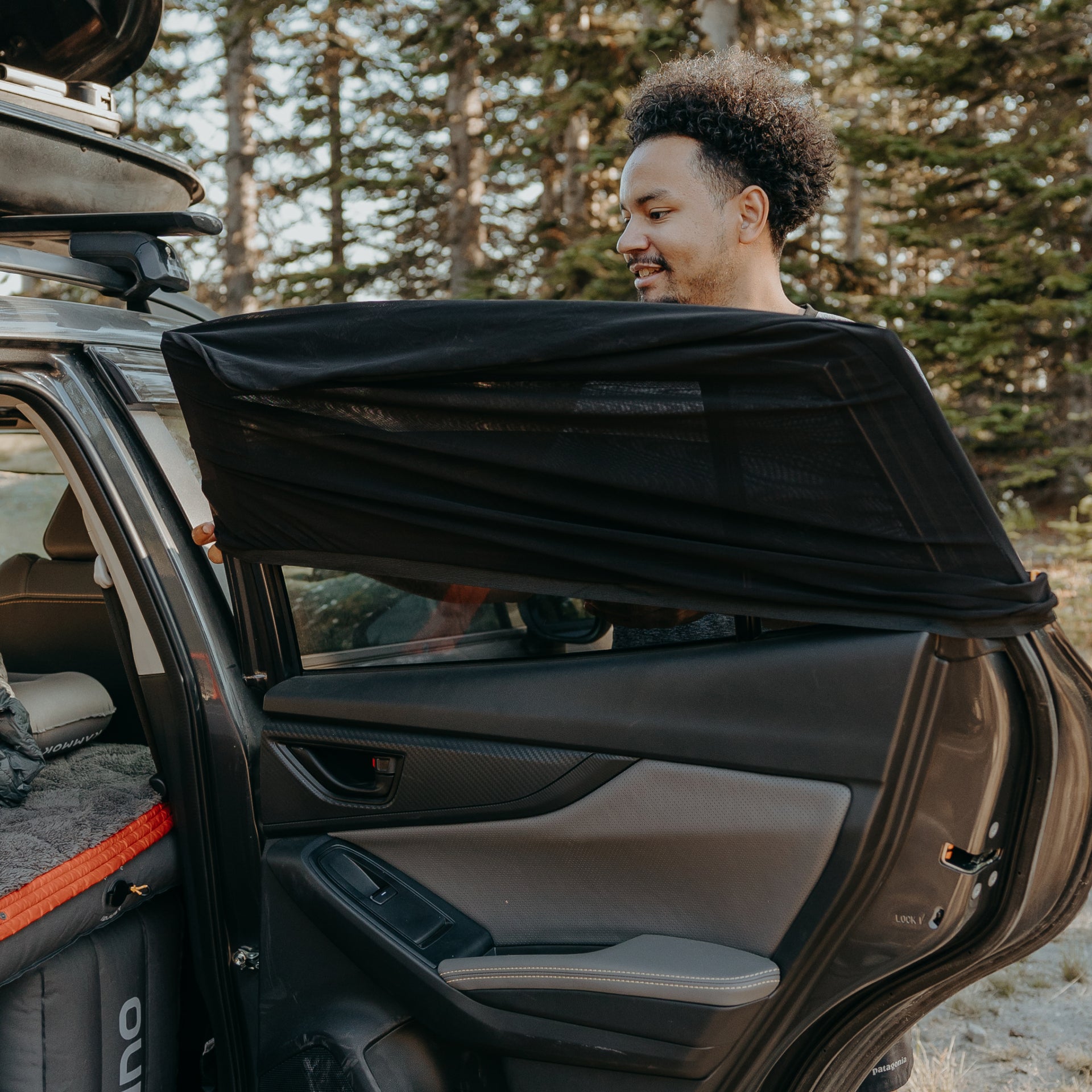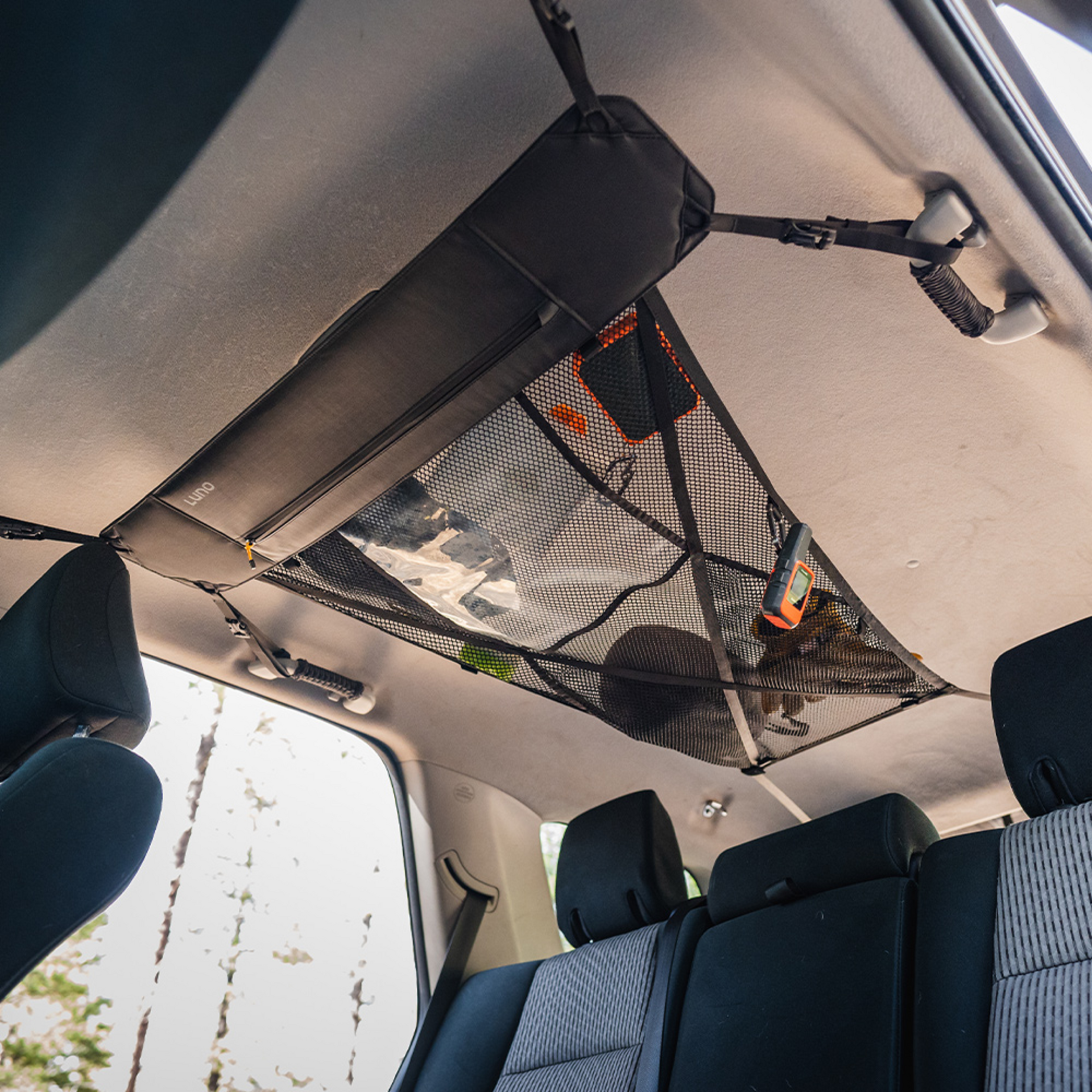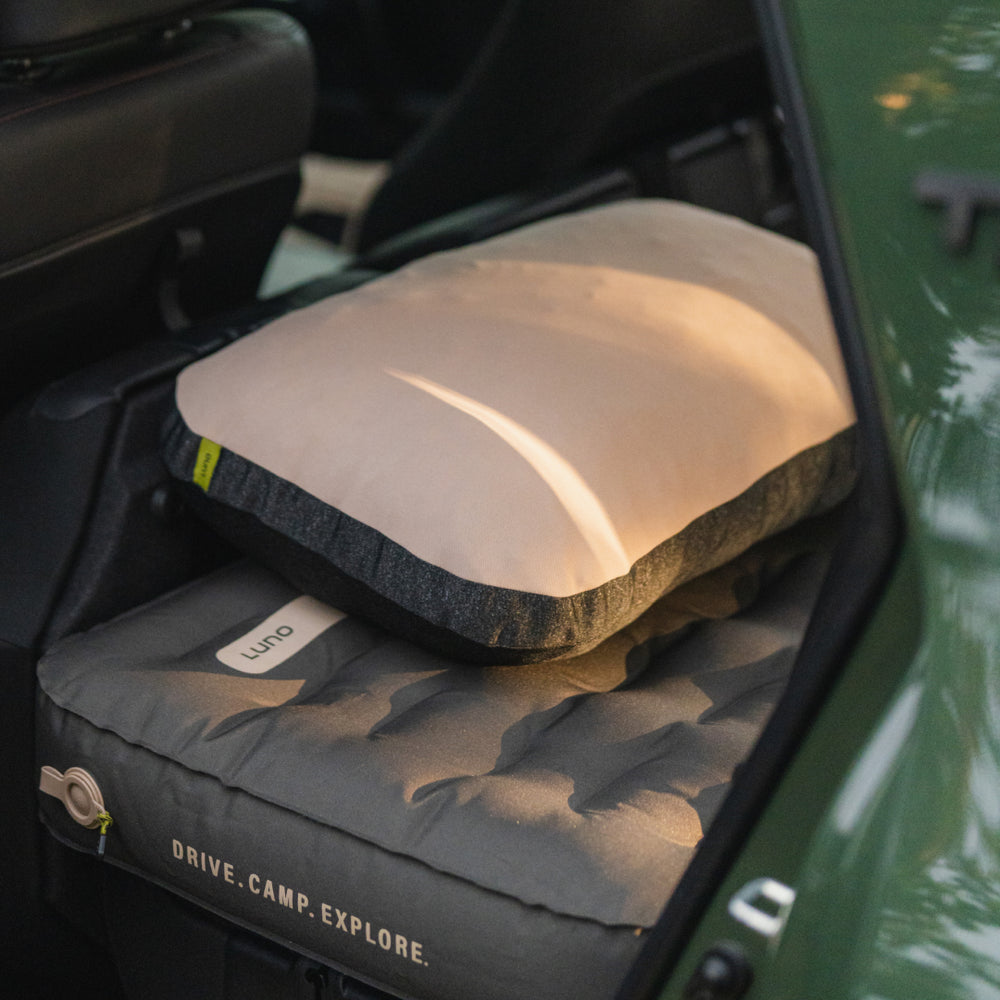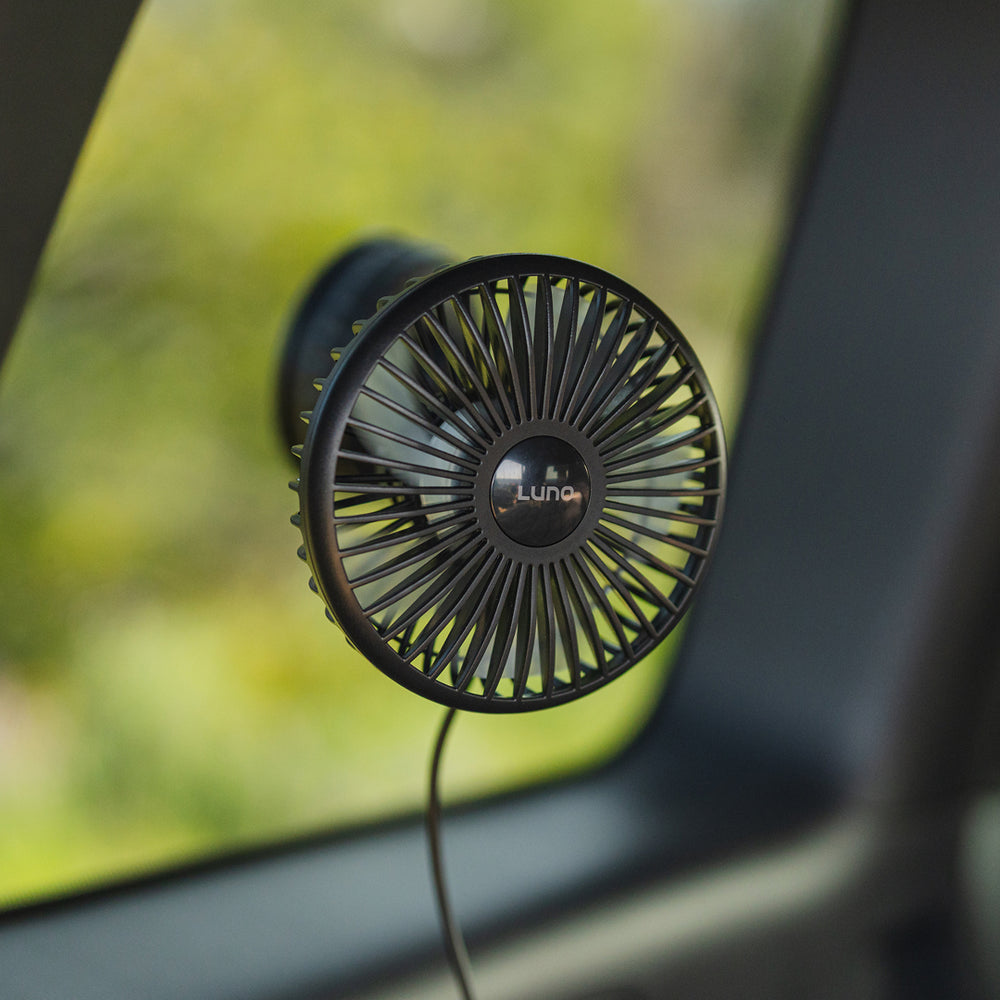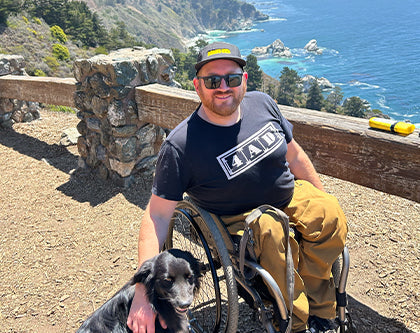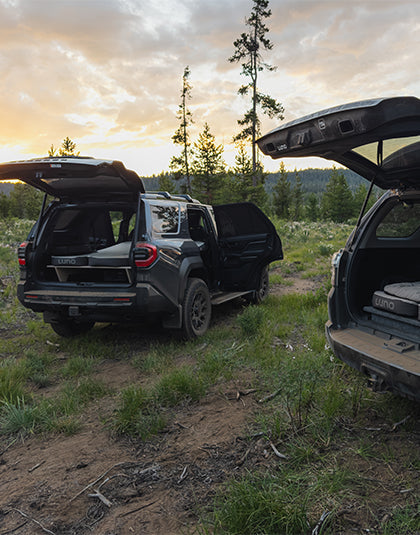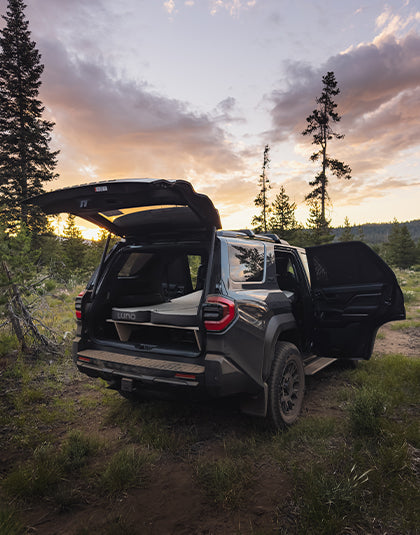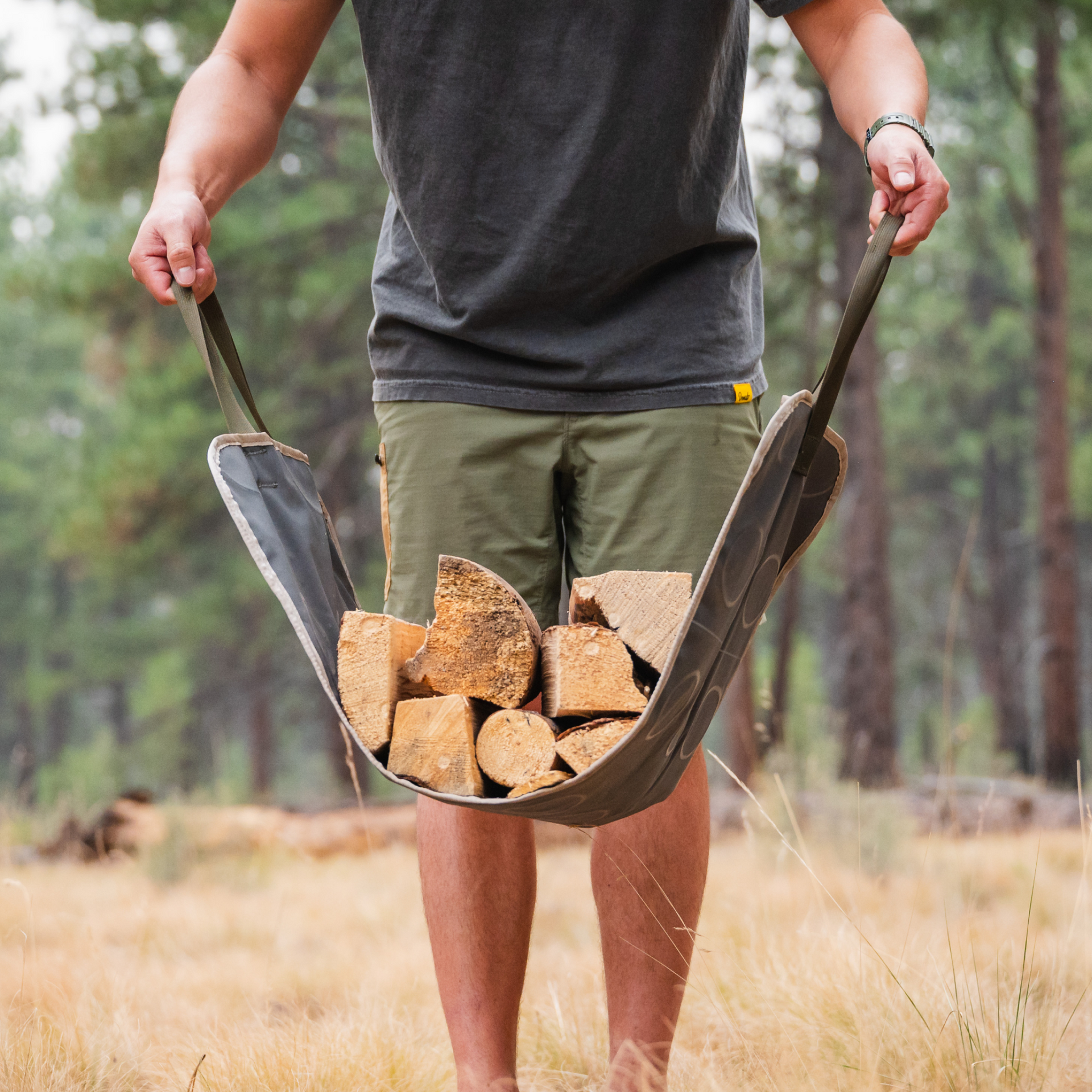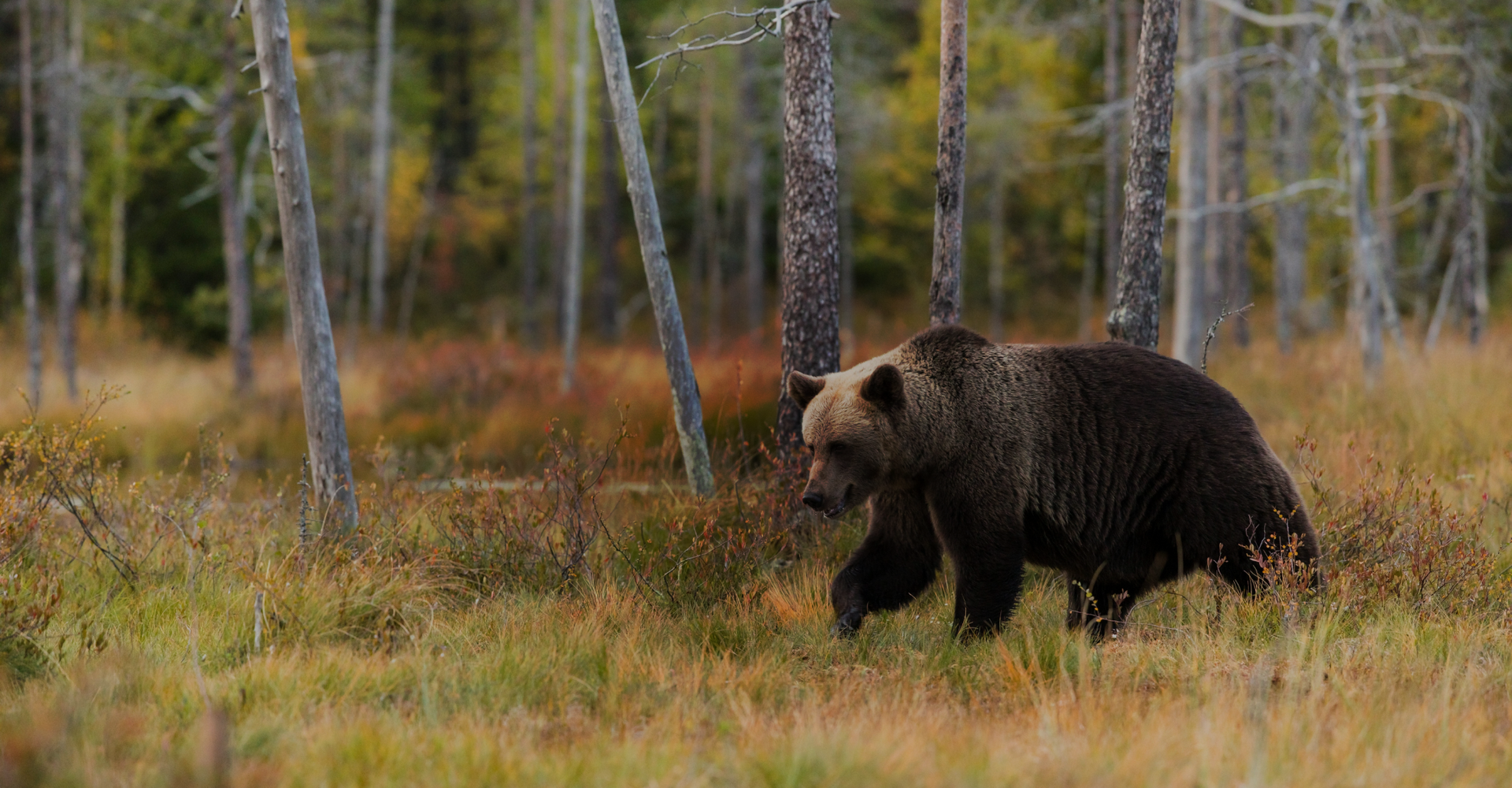
Is Sleeping in Your Vehicle Safer in Bear Country?
We are drawn to the wonders of bear country. From hot springs to aspen forests to rugged mountains and trout-filled streams, bears thrive in some of the most beautiful wild spaces. We also love bears! They're cute, fuzzy, and a vital aspect of their ecosystems. Safety is important for you as the camper and important for the bears too. As more of us hit the road in search of these places, it’s essential to understand bear safety while camping, even when you’re sleeping in your car.
Whether you’re new to car camping or a seasoned road tripper, this blog will aim to help you understand everything from bear activity, safe practices, and why sleeping in your vehicle is the safest way to camp in bear country.
Seasonal Bear Activity: When Are Bears Most Active?
Bear behavior changes throughout the year. Here’s what to know before your trip:
-
Spring (March–May): Hungry Bears Wake Up
Bears emerge from hibernation lean and hungry. Limited natural food sources make campsites tempting. -
Summer (June–August): More Campers, More Bears
Natural food is more abundant, but human activity increases. Bears may wander into campgrounds. -
Fall (September–November): Hyperphagia Season
Bears enter calorie-hoarding mode, eating up to 20,000 calories daily. Campsites are at peak risk. This is when they are eager to gobble up any food they can find, especially campsite snacks. -
Winter (December–February): Mostly Hibernating, But Not Always
Most bears den up, but in warmer regions, not all hibernate. Don’t assume bear activity is zero.
👉 Always check National Park Service Bear Safety Guidelines or local ranger stations for updates.

Is Sleeping in Your Car Safer Than a Tent in Bear Country?
When camping in bear country, your sleeping setup matters. Let’s compare:
Sleeping in a Ground Tent:
-
✅ Pro: Classic camping experience.
-
❌ Con: Thin walls = no real barrier from bears. You’re vulnerable to smells and noise. Difficult to pack up quickly and less comfortable.
-
⚠️ Bottom Line: Least safe option in high bear activity zones.
Sleeping in a Rooftop Tent (RTT):
-
✅ Pro: Elevated from the ground, feels more secure.
-
❌ Con: Still soft-sided. Bears can climb, and your food is often stored below in the car. Difficult to pack up quickly.
-
⚠️ Bottom Line: Safer than a ground tent, but not foolproof.
Sleeping Inside Your Car:
-
✅ Pro: Hard-sided protection. Doors lock, windows roll up. You can drive away easily.
-
❌ Con: Less “traditional” camping feel.
-
🏆 Bottom Line: Safest option in bear country. In fact, some campgrounds require it.
Camping Rules and Regulations in Bear Country
-
Some campgrounds ban tents and only allow hard-sided vehicles.
-
Check U.S. Forest Service Bear Safety Guidelines before your trip.
-
Ask rangers about recent bear sightings.
-
Keep pets leashed and under control — they can attract or aggravate bears.

Why Some Campgrounds Require Hard-Sided Camping
In high bear activity areas like Yellowstone, Glacier, and Yosemite, certain campgrounds require hard-sided camping only — meaning you must sleep in a vehicle, campervan, or RV. Tents and rooftop tents aren’t allowed.
The reason is simple: bears have historically torn into soft-sided shelters in search of food. Hard-sided rules reduce risk for campers and prevent bears from becoming food-conditioned.
Examples of hard-sided only campgrounds:
-
Fishing Bridge RV Park (Yellowstone National Park)
-
Many Glacier Campground (Glacier National Park) – during peak bear season
-
Certain Yosemite Valley Campgrounds – strictest food storage rules in the U.S.
For campers, this means sleeping in your car or SUV isn’t just safer — it’s sometimes the only way you’ll be allowed to stay in these areas. A simple plug and play setup like the Luno Air Mattress transforms your vehicle into a comfortable, compliant hard-sided shelter.
FAQ: Bear Safety and Car Camping
Can bears break into cars?
Yes, especially black bears in places like Yosemite. They’ve been known to break into vehicles if food or trash is visible. Always store smellables in sealed containers and keep your car windows up when not inside. If sleeping in your vehicle, a big perk is that you can climb into your front seat and drive away if needed.
Is a car really safer than a tent in bear country?
Yes. A locked, hard-sided car offers more protection than a soft-sided ground or rooftop tent. Many high-risk areas only allow vehicle camping for this reason.
Do I need bear spray if I’m sleeping in my car?
Yes. Bear spray is more for hiking and outdoor cooking areas, but it’s smart to have it accessible near your sleeping spot.
Are rooftop tents safe in bear country?
Safer than ground tents, but still soft-sided. Bears can climb, and you’re more exposed than if you were in your car.
How to Keep a Clean Camp in Bear Country
The #1 rule of bear country: “A fed bear is a dead bear.” Once a bear associates humans with food, it often leads to conflict.
Tips for a clean camp:
-
Collect trash daily and use bear-proof containers.
-
No bear bin? Store trash in sealed containers inside your car.
-
Keep food prep, gear storage, and sleeping areas separate.
-
Don’t leave wrappers, utensils, or toothpaste lying around.
The Luno Magnetic Storage Bag is great at doubling for a campsite trashcan but be sure to move it to a bear safe location when not using it or at night. The cleaner your camp, the less interesting you are to a bear.
How to Store Food and Smellables While Car Camping
If it smells to you, it reeks to a bear. Common “smellables” include:
-
Food + trash
-
Toiletries (toothpaste, deodorant, soap, sunscreen)
-
Pet food
Safe storage options:
-
Locked vehicle with windows rolled up.
-
Bear canisters for backcountry trips.
📍 Pro-tip: Don’t cook or sleep in the same clothes. If you grilled dinner, stash those smoky clothes in a sealed container or bag.

Best Bear Deterrent Options for Car Camping and Hiking
When camping in bear country, prevention is the priority — but carrying a deterrent gives you peace of mind if a close encounter happens. Here are the most common options:
Bear Spray (Highly Recommended)
-
What it is: A non-lethal, highly concentrated pepper spray designed to stop a charging bear.
-
How to use it:
-
Carry it in a holster on your hip or chest — not buried in your pack.
-
Remove the safety clip when a bear approaches within 50–60 feet.
-
Aim slightly downward in front of the bear’s path and spray in short bursts to create a pepper cloud.
-
Be ready to spray again if the bear continues.
-
Pros: Most effective deterrent; non-lethal; recommended by National Park Service & U.S. Fish & Wildlife Service.
-
Cons: Single-use canisters; can explode in hot cars; requires practice to use effectively.
👉 Learn more from Yellowstone National Park’s Bear Spray Guide
Bear Bells (Not Effective Alone)
-
What it is: Small bells that jingle while you hike, meant to alert bears to your presence.
-
Effectiveness: Studies show bears often ignore the sound, especially if they’re habituated to humans. Bears are more likely to respond to loud voices or clapping than to bells.
-
Pros: Lightweight, hands-free, constant noise.
-
Cons: Not reliable; false sense of security; may annoy other hikers more than bears.
-
Best use: Supplement with talking, singing, or clapping on the trail.
Firearms (Controversial and Last-Resort)
-
What it is: Handguns or rifles carried for defense against bears.
-
Effectiveness: Studies show bear spray is more effective than firearms in preventing injury during encounters. Firearms require high accuracy under extreme stress, which is difficult in a charging-bear scenario.
-
Legal note: Firearm laws vary widely across national parks, forests, and states — always check local regulations.
-
Pros: Potentially lethal if used accurately.
-
Cons: Risk of wounding (and enraging) the bear; dangerous around groups; often illegal in protected lands; requires extensive training.
Noise and Human Presence (First Line of Defense)
-
What it is: Talking, singing, clapping, or shouting while hiking.
-
Effectiveness: Very effective at alerting bears before you surprise them. Bears usually avoid humans if they hear you coming.
-
Pros: Free, simple, and effective.
-
Cons: Requires consistency; easy to forget on quiet trails. Not a full proof method for guaranteeing bears stay away. Not as effective in areas where bears are used to humans.

Electric Bear Fences (Backcountry/Extended Stays)
-
What it is: Portable, battery-powered fences that deliver a non-lethal shock.
-
Effectiveness: Very effective at keeping bears out of backcountry campsites, commonly used in Alaska.
-
Pros: Excellent for multi-day basecamps in high-bear areas.
- Cons: Expensive; bulky; overkill for short car camping trips.
Which Bear Deterrent Should You Carry?
-
Day hikes or backcountry travel in grizzly country: Bear spray + making noise.
-
Car camping: Bear spray accessible in your vehicle + clean camp practices.
-
Backcountry basecamps in high-bear areas: Bear spray + electric fence for extra peace of mind.
-
Skip the bear bells, use your voice instead.
-
Firearms should only be considered where legal, and only by those trained and confident under stress.
Extra Perks of Sleeping Inside Your Vehicle in Bear Country
Beyond safety, car camping has several big advantages over tents or rooftop setups and in bear country, those perks make a real difference. Here’s how sleeping inside your vehicle keeps you both safer and more comfortable:
-
Weather Protection (and Smell Control) - Wet gear, flapping tents, and strong cooking odors can all attract wildlife. Inside your vehicle, you’re shielded from rain and wind while keeping smells contained. Avoid the rain and stay cozy.
-
Comfortable Sleep Setup - Tossing and turning on uneven ground keeps you awake and alert to every rustle outside. A flat, vehicle-fitted mattress like one from Luno lets you actually rest, so you’re not jumpy when every squirrel sounds like a grizzly. Pair it with a cozy comforter and pillows and you’re camping in comfort.

-
Privacy and Security from Curious Bears - A thin nylon wall won’t stop a bear from investigating food smells, but locked doors and tinted windows add a layer of safety and privacy. With Luno Car Window Screens, you can keep your windows cracked without inviting in bugs or giving wildlife a peek at your setup.
-
Better Temperature Control in Bear Season - Cold spring and fall nights (when bears are most food-driven) are warmer inside a car than in a tent. Hot summer days can still be bear-active too, and shades or airflow help. Luno’s privacy and air flow gear are perfect when you want to be up with the sunrise, not startled by nighttime noises.
-
Quick Setup = Fewer Attractants Left Out - The longer it takes to set up camp, the more chance wrappers, food, or gear end up scattered. With a quick car camping setup, inflate your mattress, roll out bedding, and you’re done, there’s less opportunity for smells or trash to linger.
-
Multi-Use Space That Stays Organized - An organized car means fewer crumbs and fewer smellables out in the open. Use the Luno Seatback Organizer and storage bins to separate food, clothes, and sleep gear. Keeping your system tight makes your camp less interesting to bears.
Bottom line: Sleeping inside your vehicle isn’t just safer in bear country — it helps you manage food, smells, and clutter more effectively, all while giving you a better night’s sleep.
Final Thoughts: Sleep Smart, Camp Safe
Bears are part of what makes wild spaces wild and respecting them keeps both you and the bears safe. Car camping offers the best balance of safety and comfort in bear country.
With preparation, clean camping habits, and the right sleep setup, you can rest easy — so the only thing waking you up is the sunrise.

